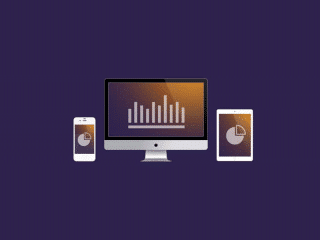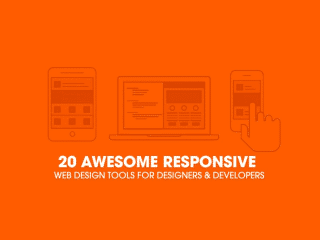Essential Security Tools for Web Developers and Designers
Whether you’re designing a simple website or building complex web applications, security needs to be a priority from day one. Cyber threats like data breaches, cross-site scripting (XSS), and SQL injections are becoming more sophisticated, targeting every weakness they can find.
Fortunately, various security tools exist to help developers and designers safeguard their projects and ensure users enjoy a seamless and secure experience. This article will explore essential security tools that should be part of every developer’s toolkit.
1. OWASP ZAP

OWASP ZAP is an open-source tool that identifies vulnerabilities in web applications. It scans for security weaknesses like SQL injection, cross-site scripting (XSS), and authentication flaws. OWASP ZAP offers automated and manual testing options, making it useful throughout the development lifecycle. Developers can also integrate it into their CI/CD pipelines, catching vulnerabilities before they reach production.
By using OWASP ZAP early and often, development teams can adopt a proactive approach to security, preventing common attacks from slipping through the cracks. It also provides detailed reports that guide developers on mitigating issues, ensuring every code change aligns with security best practices.
2. Burp Suite

Burp Suite is a powerful tool designed for web application security testing. It provides developers with tools to inspect HTTP requests, manipulate data, and simulate attacks. Burp Suite’s automated scanner detects vulnerabilities, while its manual tools allow security experts to perform deep-dive testing on complex issues.
The platform’s modular nature makes it easy to customize testing processes. With features like Intruder for brute-force testing and Repeater for request manipulation, Burp Suite offers flexibility for both automated and manual testing. These capabilities help developers address logic flaws, broken authentication, and access control issues that automated scanners might miss.
3. VPN
Remote work becoming the new norm, VPNs are essential for developers who need secure access to servers, platforms, and databases from various locations. A reliable VPN ensures that online activities remain encrypted and private, helping prevent data leaks and unauthorized access. By using industry-standard AES-256 encryption and specialized protocols, VPNs provide a secure option for accessing sensitive environments—even on public Wi-Fi.
Pairing VPNs with eSIM service technology further enhances flexibility for developers who frequently travel or switch between networks. eSIMs allow instant connectivity across different carriers without needing physical SIM cards, making it easier to stay online securely wherever you are. VPNs can also mask IP addresses, allowing developers to test web applications from multiple regions without compromising security.
VPNs can also mask IP addresses, allowing developers to test web applications from multiple regions without compromising security. If you’re considering a VPN, reading a ProtonVPN review can provide insights into its features, such as strong encryption, privacy-focused policies, and performance, helping you decide if it meets your development needs. With a global network of servers, VPNs offer access to geo-restricted content and tools, enabling seamless and secure workflows regardless of the developer’s location. For example, services like AstrillVPN offer features tailored for developers, enhancing both privacy and functionality across diverse use cases.
4. Nmap
Nmap is a well-known tool for network discovery and auditing. It helps developers identify open ports, running services, and network misconfigurations that attackers could exploit. Nmap’s comprehensive scans offer insights into the entire network infrastructure, making it easier for developers to secure their systems proactively.
Using Nmap during the early stages of development ensures that potential entry points are identified and secured before launch. It’s also a valuable tool for periodic security audits, keeping infrastructure resilient against evolving threats.
5. Acunetix
Acunetix is a web vulnerability scanner that fits perfectly into DevOps workflows and offers continuous security monitoring. It automates the detection of vulnerabilities like SQL injection, XSS, and broken authentication and generates detailed reports for quick remediation. Acunetix supports CI/CD integration, making it a great fit for teams practicing agile development.
This tool stands out for its speed and accuracy, which helps developers keep up with tight release schedules while ensuring robust security. Its seamless integration into development environments allows teams to detect issues without slowing their workflow.
6. Wireshark

Wireshark is a go-to tool for analyzing network traffic and troubleshooting security issues. It provides deep insights into how data travels between a web application and its backend systems, enabling developers to detect bottlenecks, data leaks, or malicious activities. Wireshark captures and inspects data packets in real-time, allowing teams to identify and respond to anomalies quickly.
Wireshark ensures that communication channels remain secure and efficient for developers working on complex web applications. Its robust filtering options allow users to pinpoint specific traffic flows, making it an indispensable tool for network analysis and security debugging.
7. Metasploit
Metasploit enables developers to adopt an attacker’s mindset by simulating real-world cyberattacks. It provides a library of known exploits that can be used to test applications and systems, helping teams assess how well their defenses will perform under pressure. Metasploit’s penetration testing framework is essential for anyone serious about security, as it gives developers a clear understanding of their application’s vulnerabilities before malicious actors can exploit them.
8. Web Application Firewalls (WAFs)

WAFs act like gatekeepers, monitoring incoming traffic and blocking anything that looks suspicious. By filtering HTTP requests, tools like AWS WAF protect against the most common web attacks, including SQL injection and XSS. For developers managing high-traffic websites or online platforms, WAFs ensure that malicious traffic never reaches the application’s backend, maintaining performance while keeping attackers at bay.
9. Secure Coding Practices and Code Reviews
Secure coding practices are the foundation of any secure web application. Developers should sanitize inputs, use parameterized queries to prevent SQL injection and apply access control mechanisms to restrict unauthorized access. Embedding security principles into the codebase from the start ensures that vulnerabilities are minimized.
Regular code reviews, both automated and manual, are essential to catch security flaws early. Developers can also use Static Application Security Testing (SAST) tools to identify vulnerabilities during development, keeping code secure throughout the project lifecycle.
10. GitGuardian
GitGuardian is a crucial tool for developers working with code repositories. It continuously scans repositories for exposed credentials, such as API keys, tokens, or passwords that may have been accidentally committed. With GitGuardian, developers can avoid the risk of attackers exploiting leaked secrets, ensuring that sensitive information stays protected. It also provides real-time alerts, enabling teams to act when potential exposures are detected immediately.
11. Snyk: Manage Open-Source Vulnerabilities
Snyk specializes in finding vulnerabilities within open-source libraries and dependencies. Modern web applications rely heavily on open-source components, so Snyk helps developers identify and patch vulnerabilities early. It integrates with DevOps tools, offering continuous monitoring to ensure dependencies remain secure throughout development cycles.
12. Security Audits and Continuous Testing: Stay One Step Ahead
Regular security audits and continuous testing play a crucial role in safeguarding digital environments. By incorporating automated testing tools alongside thorough manual audits conducted at regular intervals, organizations can swiftly identify and address emerging risks. This proactive strategy not only aids teams in adhering to established security standards but also serves as a preventive measure, ensuring that minor security concerns do not escalate into significant incidents that could jeopardize sensitive information or disrupt operations. Such diligence fosters a culture of security awareness and resilience within the organization.
13. Two-Factor Authentication (2FA)
Two-factor authentication is a simple yet powerful way to protect accounts from unauthorized access. By requiring users to provide two verification forms, like a password and a code sent to their phone, 2FA ensures that attackers can’t gain access even if passwords are compromised. Developers should implement 2FA wherever sensitive data or user information is involved, adding an extra layer of security to the application.
14. Regular Security Audits and Continuous Testing
Security isn’t something you set up once and forget, it requires continuous monitoring and improvement. Regular security audits help identify vulnerabilities introduced through updates or changes in the infrastructure. Continuous testing ensures that applications remain compliant with security standards and are ready to face new threats as they emerge. With automated scanning tools and periodic manual testing, developers can avoid potential risks and maintain a strong security posture.
In today’s digital landscape, web security is essential for developers and designers building everything from simple sites to complex applications. This article explores top security tools, including OWASP ZAP, Burp Suite, and GitGuardian, that help identify vulnerabilities, secure sensitive data, and protect against cyber threats like SQL injection and cross-site scripting. By integrating these tools into development workflows, teams can ensure a seamless, secure user experience and maintain robust defenses against evolving threats. Whether you’re a seasoned developer or just starting, these tools provide the foundation for building safer, more resilient web applications.







